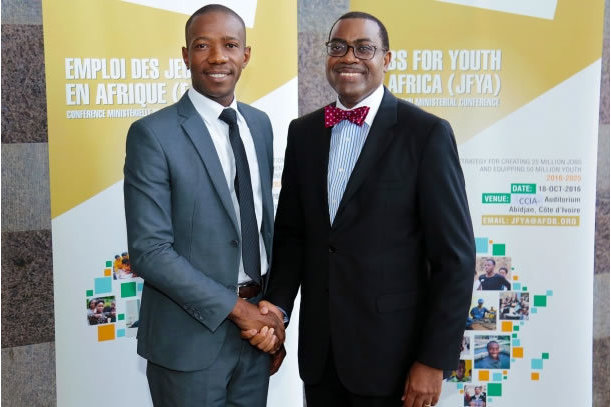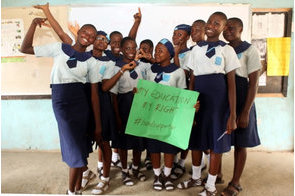AfDB's strategy for youth employment in Africa

Summary
The initiative aims to increase inclusive employment, promote entrepreneurship and strengthen human capital development.
Despite the reality of low oil prices, the narrative of long-term economic potential in Africa is hardly diminished. The African Development Bank (AfDB) has aptly identified the continent's greatest untapped asset as its rapidly-growing working-age population. Tapping the demographic dividend is crucial to achieving the Sustainable Development Goals (SDGs) for Africa.
With the highest population growth rate of any world region, Africa's population is projected to grow from 1.2 billion in 2015 and reach 2 billion by 2050 – with a median population that will be under 25 years old. What appears to be an enormous opportunity can easily become a huge risk. Even now, various African countries are grappling with different levels of youth unemployment challenges. Almost 70 percent of the youth are currently underemployed or in vulnerable employment. In some countries, for lack of wage jobs, the informal economy accounts for nearly 80 percent of jobs.
Without inclusive growth, the vast majority of young people will continue to eke out a marginal existence with all the attendant social risk factors. Vast numbers of Africans account for the migrant crisis in Europe. Rudderless African youths are often cannon fodder for political instability. To address these challenges, the AfDB's Human and Social Development Department released the Jobs for Youth in Africa Strategy 2016-2025 (JfYA) in May. The initiative aims to increase inclusive employment, promote entrepreneurship and strengthen human capital development.
Over the next decade, the JfYA is expected to create 25 million jobs that will impact 50 million youths. President of the African Development Bank, Akinwumi Adesina – who presented the framework strategy at the first West African Ministerial Conference on Youth Employment in Africa in Abidjan last month – said Africa has a job crisis. He said out of the 13 million youths that enter the labour market each year, only three million are able to find jobs. The JfYA strategy, therefore, focuses on three areas, which are, integration, innovation, and investment.
In its strategy for integration, the bank plans to include a youth employment component in the design of its projects across all sectors. As an institution, youth employment considerations will be incorporated into the bank's staff and systems. As it equips itself, the AfDB also plans to provide financial and technical assistance to the Regional Member Countries to become engines of job creation.
In the area of innovation – a key aspect of the framework strategy – the bank will focus on developing youth entrepreneurs and enhancing the skills of young people to meet private sector needs. Providing access to finance for entrepreneurs is critical; however, ideas have to be bankable to attract the available financing. The AfDB will also create an Enabling Youth Employment Index to measure youth employment outcomes and the enabling policies at the country-level. Furthermore, an Innovation and Information Lab will also be set up to support the ecosystem for youth employment and entrepreneurship.
Tying these two areas together is investment. Although Adesina said the bank will provide a total of 80 million euros towards the initiative, the JfYA will leverage private sector investments that will fuel job creation and employment for youths. The Jobs for Youth in Africa Facility is a special fund which will pool resources from the AfDB and other donors. The initiative will catalyse investment by African countries for the empowerment, education and employment of their young people.
But the youth are not just an asset class to be invested in. They can be active partners in the development process. Youths who have jobs will pay their taxes; young entrepreneurs will be able to employ other young people. By 2050, the African youth population will have ballooned from 480 million currently to 840 million, which is more than the current population of Europe. Enhancing the productivity of such a vast workforce will increase Africa's economic output exponentially.
The JfYA strategy is also designed to support efforts to achieve the 2030 Agenda for Sustainable Development, including Goal 1, Goal 4 and Goal 8. While Goal 1 calls for an end to poverty in all its manifestations, including extreme poverty; Goal 4 aims to ensure inclusive and equitable access to quality education and lifelong learning opportunities for all. SDG Goal 8 focuses on promoting inclusive and sustainable economic growth, full and productive employment and decent work for all.
Employment for the youth will lead to increased incomes, higher standards of living and better health and education access in African countries. Increased income for the bulging population will spur domestic consumption, while skilled human capital will help achieve industrialisation. A DfID study of 14 countries shows that a 1 percent increase in per capita income leads to an average of 1.7 percent reduction in poverty. Equally important in the AfDB initiative is the inclusion of gender balance as 50 percent of JfYA beneficiaries will be female youth.
Martins Hile is Executive Editor, Financial Nigeria magazine and Financialnigeria.com
Related
-
Time magazine names Tunji Funsho among 100 most influential people of 2020
Dr. Funsho was honoured for his work with Rotary International to eradicate wild polio in Africa.
-
Nigerian girl-focused charity wins international award
HACEY works with communities across Nigeria to improve the health and economic outcomes for over 300,000 girls.
-
Developing the social sector in Nigeria
Social enterprises may be the vehicles to accelerate change in the economy.








